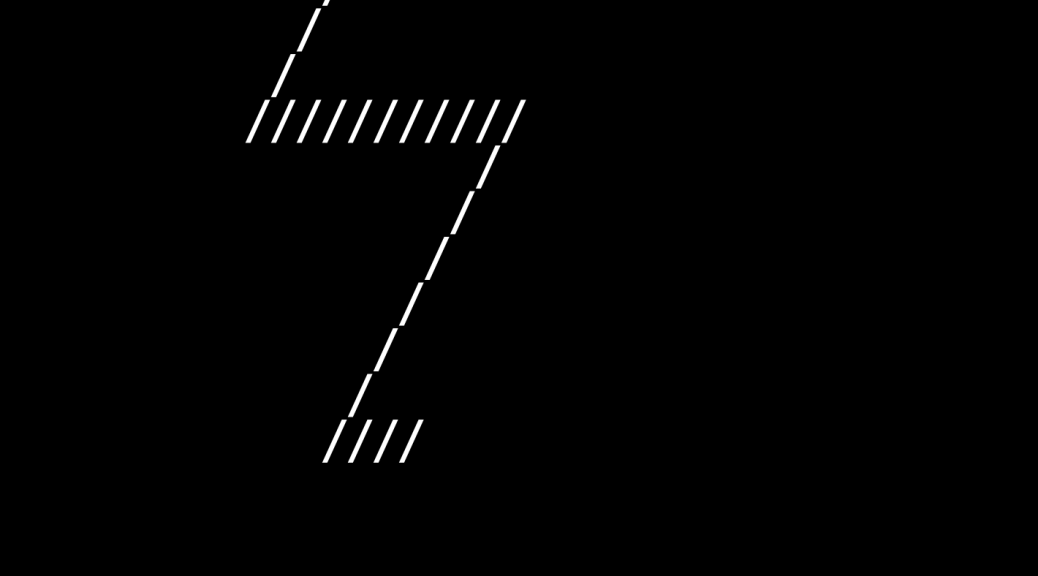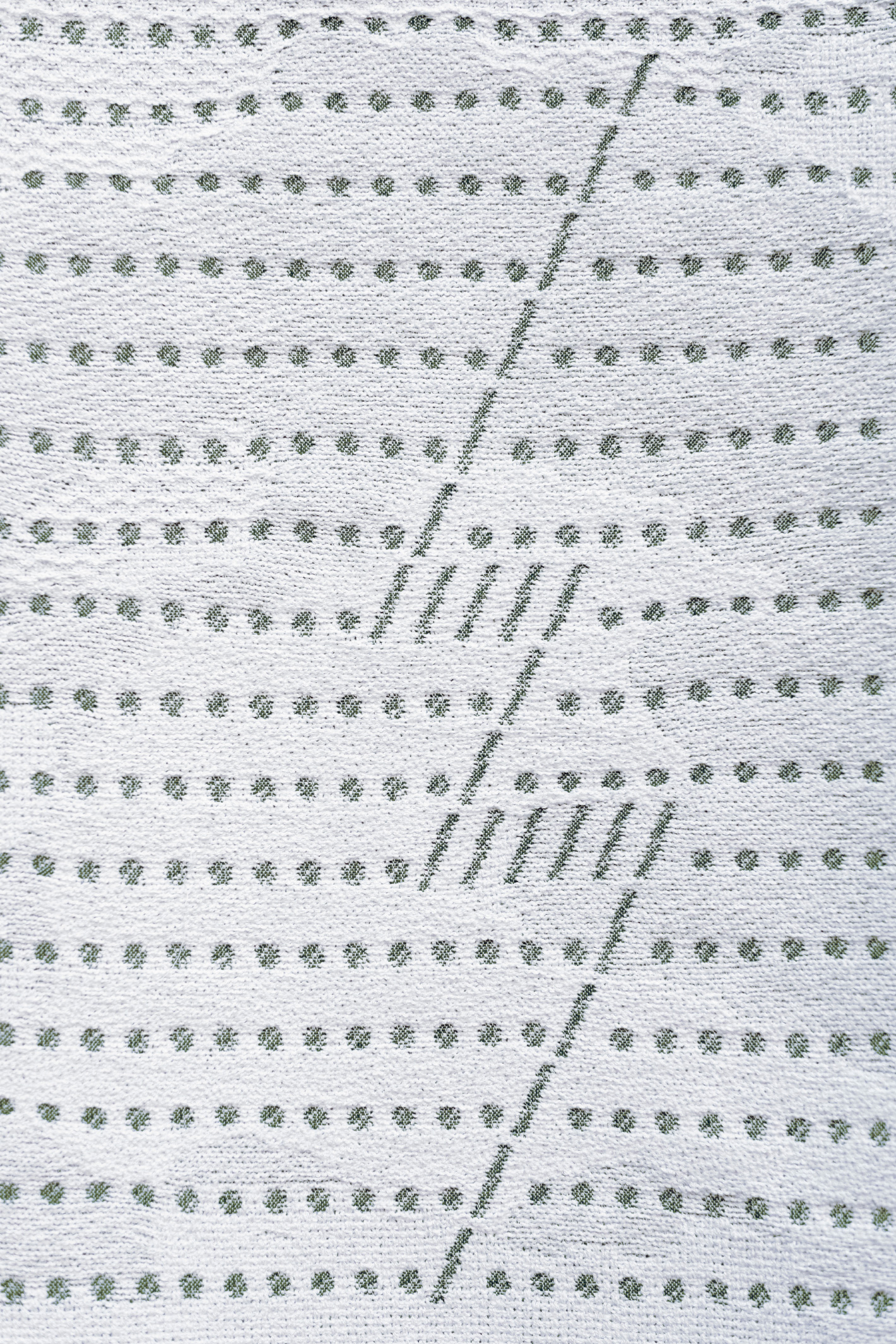
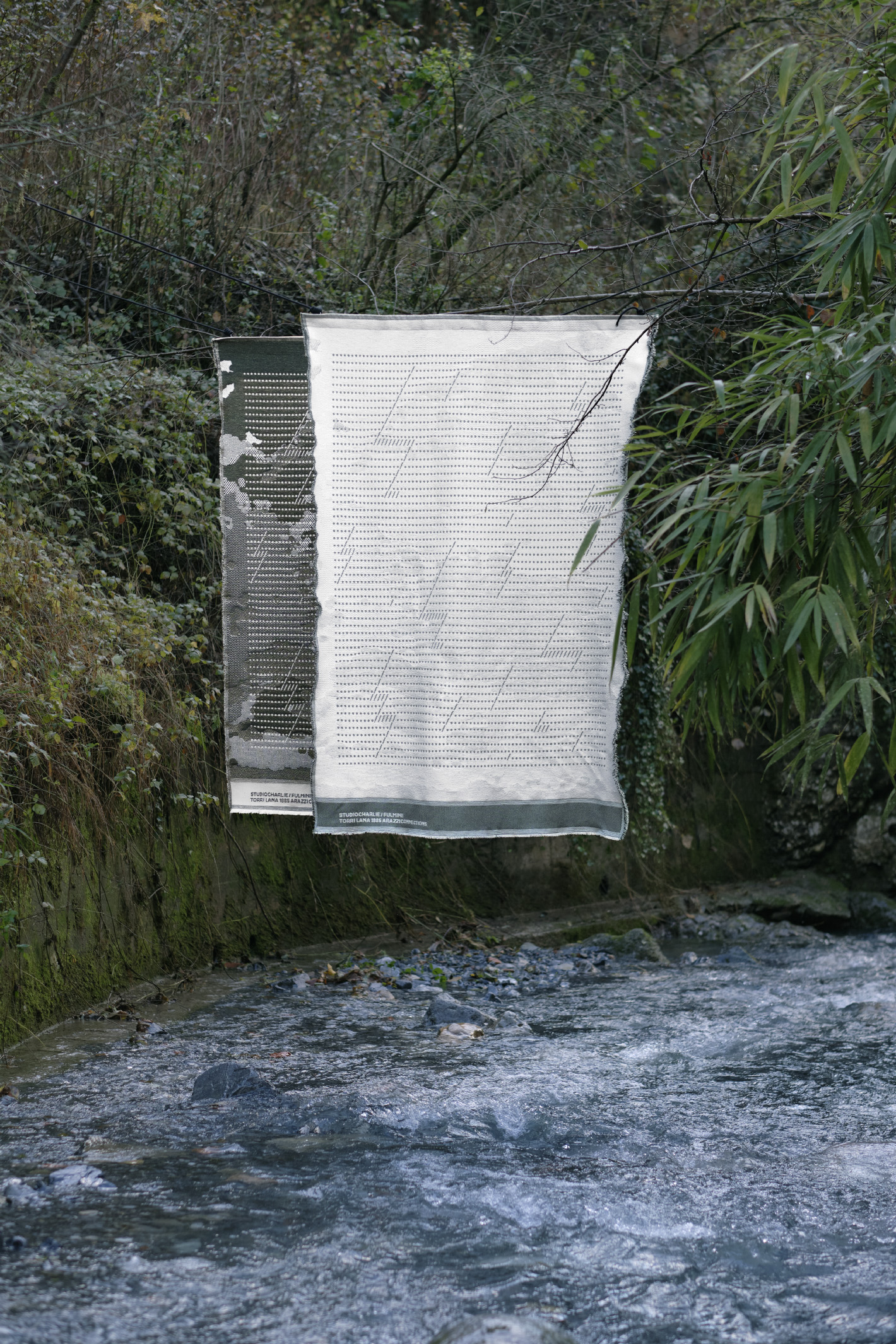
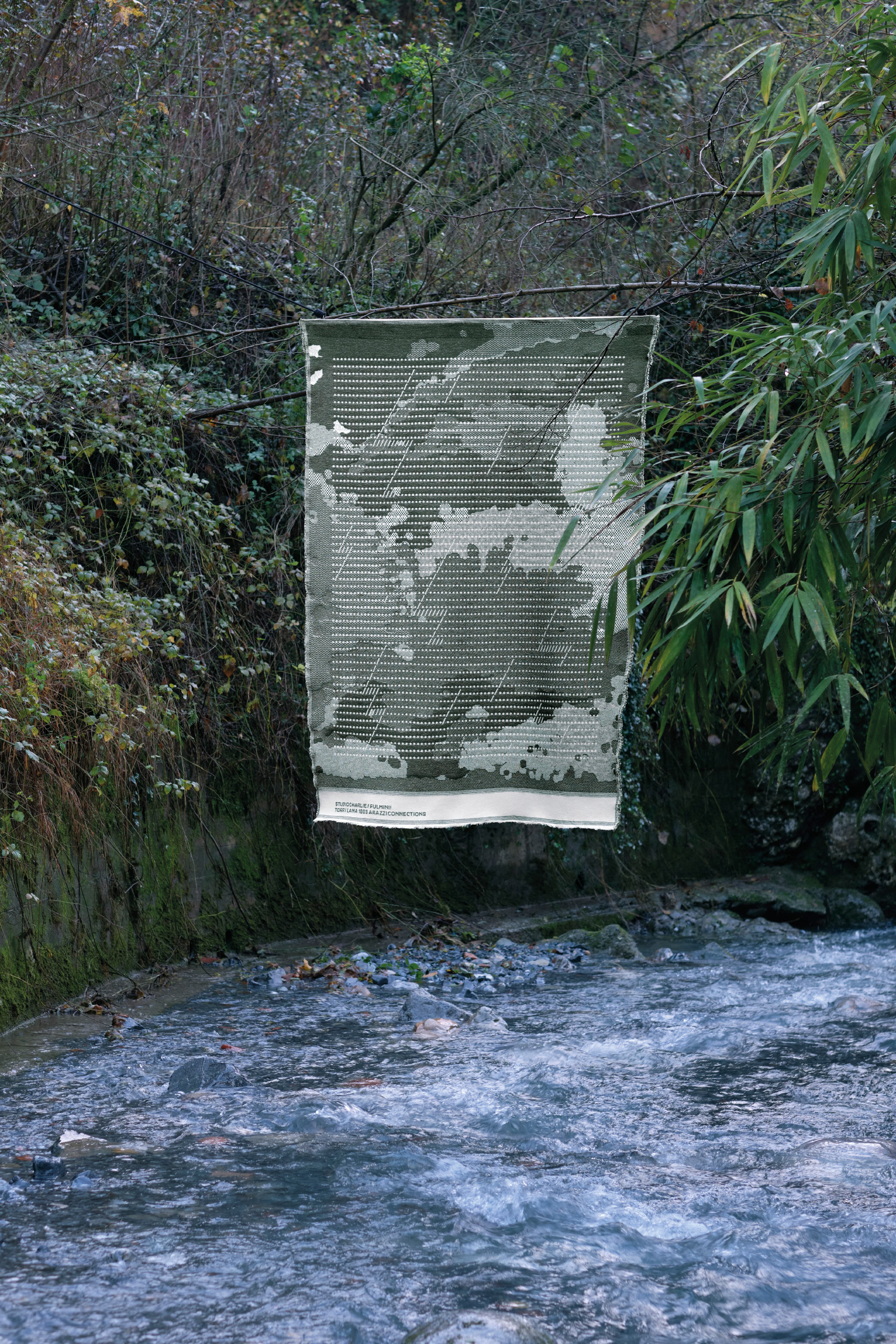
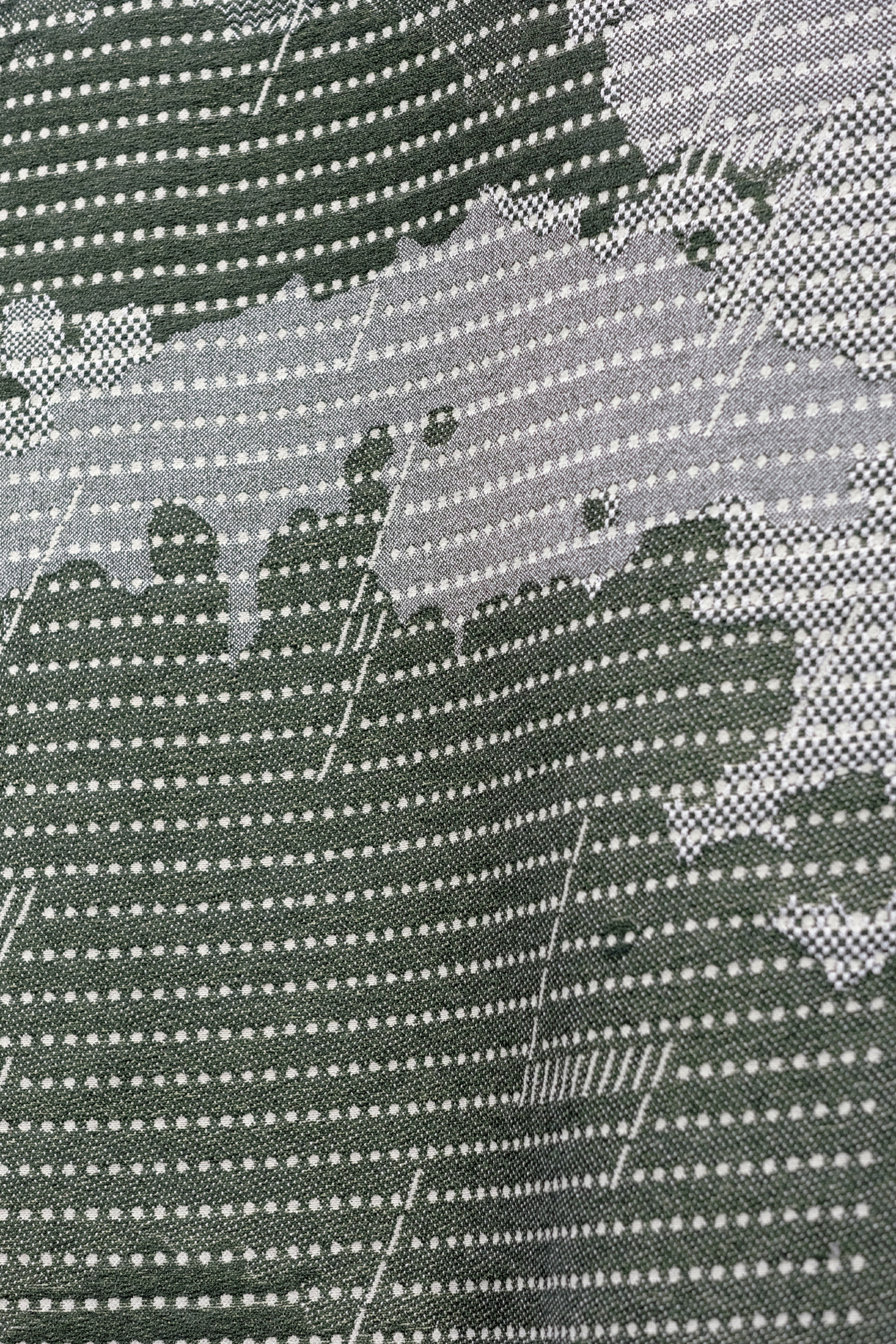
Arazzo FULMINI! per Torri Lana 1885. L’arazzo FULMINI! è il primo della collezione Torri Lana 1885 Arazzi Connections, inaugurata nel 2022, che coinvolge diversi designer internazionali. È realizzato su telaio Jacquard in altezza 140 cm con filati frisee di lino, sviluppati internamente da Torri Lana 1885. Parallelamente al progetto dell’arazzo Studiocharlie ha ideato, in stretta collaborazione con i titolari dell’azienda, le linee guida utili alla progettazione degli arazzi da parte dei designer invitati. L’arazzo FULMINI! è progettato su un doppio livello grafico che dà enfasi alla tridimensionalità del tessuto Jacquard di filati frisee. Lo sfondo è ispirato alla vegetazione rigogliosa che circonda la fabbrica, collocata tra i boschi della Valgandino. Le diverse tonalità sono ottenute tramite l’uso delle armature appositamente selezionate per la nuova collezione. Gli intrecci tra trama e ordito, dette armature, consentono di ottenere diversi gradi di copertura colore. La trama, in filato color ottanio, si incrocia con i filati di ordito bianco latte e la quantità di fili di ordito che si sovrappongono alla trama cambia a seconda dell’armatura scelta. Controllando questa variabile si ottengono diverse intensità di colore, dall’ottanio quasi pieno ad un bianco latte con pochi punti di legatura in ottanio. Il secondo livello grafico è un reticolo di punti e barre oblique, realizzato con l’armatura che porta in superficie il secondo filo di trama. L’arazzo infatti ha un doppio livello di tessitura, caratteristica tipica della produzione per l’arredamento di Torri Lana 1885, utile a dare maggiore struttura al tessuto. Il secondo filo di trama è di cotone colore ecru, più sottile del frisee. Portato in superficie, risulta più piatto delle armature di solo filato frisee. Abbiamo ottenuto così un disegno di sfondo che risulta più sporgente rispetto alla grafica in primo piano. I segni tipografici utilizzati sono minimi, un punto e una barra, ciò nonostante questi semplici segni sono in grado di evocare una tempesta. L’apparente regolarità del reticolo di punti e barre dialoga ironicamente con la potenziale libertà assoluta di rappresentazione a campo unico tipica della tecnica Jacquard. Il reticolo grafico è un omaggio alle macchine da scrivere Olivetti e a tutta quella tecnologia che oggi definiamo analogica che si colloca concettualmente appena prima della nostra era digitale, e di cui fa parte la stessa tecnica Jacquard, che con i suoi cartoni forati può essere considerata una capostipite del sistema binario. I nuovi telai Jacquard non funzionano più con i cartoni forati, sostituiti da sistemi digitali, ma mantengono praticamente inalterato il funzionamento meccanico dei vecchi telai ottocenteschi. /// Tapestry FULMINI! (LIGHTNINGS! in english) for Torri Lana 1885. FULMINI! is the first tapestry of the Torri Lana 1885 Arazzi Connections collection, inaugurated in 2022, which involves several international designers. It is made on a Jacquard loom 140 cm high with linen frizee yarns, developed internally by Torri Lana 1885. Parallel to the tapestry project Studiocharlie created the guidelines useful for the design of the tapestries by the invited designers, in close collaboration with the owners of the company. The FULMINI! tapestry is designed on a double graphic level that emphasizes the three-dimensionality of the Jacquard fabric of frisee yarns. The background is inspired by the luxuriant vegetation that surrounds the factory, located in the woods of Valgandino. The different shades are obtained through the use of the weaves specially selected for the new collection. The intertwining between weft and warp, called weaves, allows to obtain different degrees of color coverage. The weft, in teal blue yarn, crosses with the milky white warp yarns and the quantity of warp yarns that overlap the weft changes according to the chosen weave. By controlling this variable, different intensities of color are obtained, from almost full teal blue to a milky white with few teal blue binding points. The second graphic level is a grid of points and oblique bars, and is obtained with the weave that brings the second weft thread on the surface. In fact, the tapestry has a double level of weaving, a technique used by Torri Lana 1885 for the production dedicated to furniture, useful for giving a stronger structure to the fabric. The second weft thread is in ecru cotton, thinner than the frisee. When brought to the surface, it is flatter than the weaves of frisee yarn. The result is a background design that protrudes more than the foreground graphics. The typographic signs used are minimal, a dot and a slash, nevertheless these simple signs are able to evoke a storm. The apparent regularity of the grid of dots and bars ironically dialogues with the potential absolute freedom of single-field representation typical of the Jacquard technique. The graphic grid is a tribute to Olivetti typewriters and to all that technology that today we call analogic and which was the only technique that existed before our digital age. And the Jacquard technique is also part of that analogic world, but just before the digital age, because with its perforated cartons it can be considered a progenitor of the binary system. The new Jacquard looms no longer work with perforated cartons, replaced by digital systems, but keep the mechanical functioning of the old nineteenth-century looms practically unchanged.
Dimensioni: 140cm x 198cm. ph.1 / ph.2 / ph.3 / ph.4 Alberto Mancini www.torrilana.it
Size: 140cm x 198cm.
ph.1 / ph.2 / ph.3 / ph.4 Alberto Mancini
www.torrilana.it
